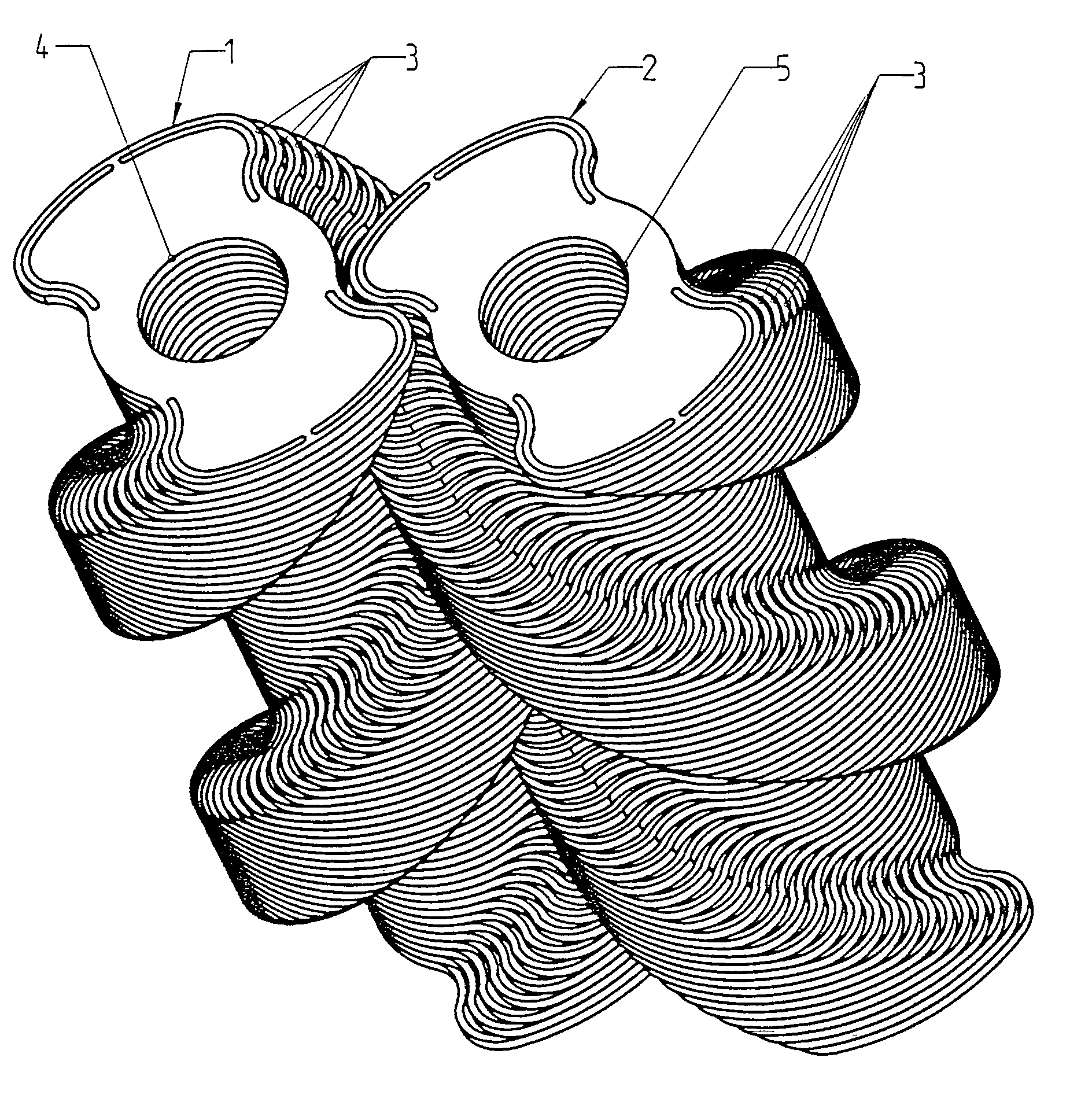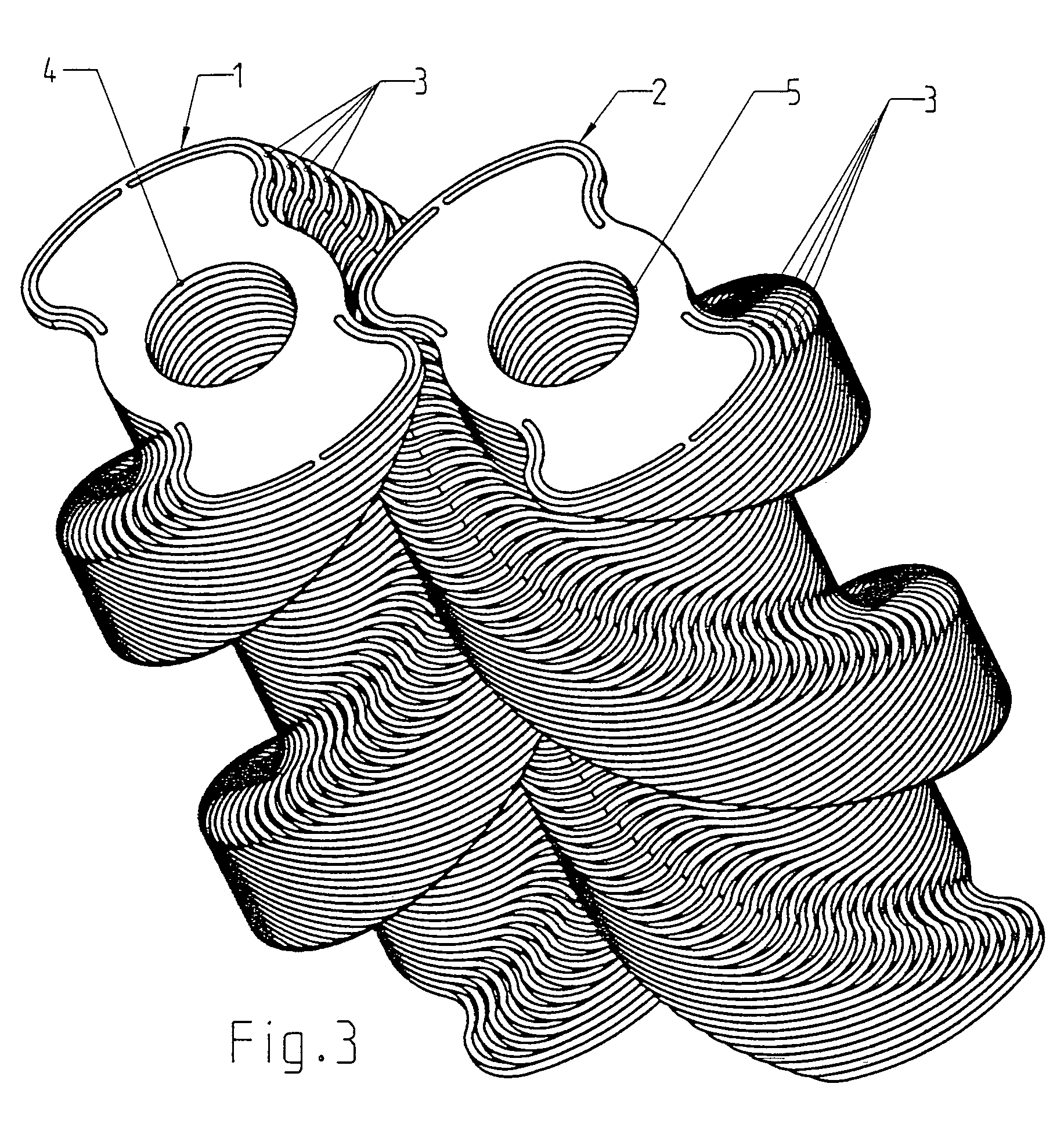Twin-shaft vacuum pump and method of forming same
a vacuum pump and twin-shaft technology, applied in the direction of intermeshing engagement type engines, rotary piston engines, rotary or oscillating piston engines, etc., can solve the problems of high back flow loss, high manufacturing and testing costs, high cost, etc., and achieve cost-effective manufacturing. , the effect of reducing manufacturing costs
- Summary
- Abstract
- Description
- Claims
- Application Information
AI Technical Summary
Benefits of technology
Problems solved by technology
Method used
Image
Examples
Embodiment Construction
[0064]FIG. 2 shows a rotor 1 for twin-shaft vacuum pump according to the present invention and which is supported on a shaft 4. The rotor 1 is formed of a plurality of discoid components 3 offset relative to each other by the same angle.
[0065]FIG. 3 shows two rotors 1 and 2 supported, respectively, on two shafts 4 and 5 of a twin-shaft vacuum pump. The rotor 2 is formed, as the rotor 1 shown in FIG. 2, of discoid components 3 likewise offset relative to each other at the same angle. With the components 3 of each rotor 1, 2 being offset relative to each other in a rotational direction of the rotors 1, 2, an outer profile of the rotors 1, 2 has a helical shape.
[0066]The component 3, of which the rotors 1 and 2 are formed, is shown in FIG. 1a. The component 3 is formed as a discoid member 6 having a receiving opening 7 for receiving a shaft 8 which extends therethrough. The receiving opening 7 is surrounded by a ring of holes 9. Upon forming a rotor of the discoid members 6, with the m...
PUM
 Login to View More
Login to View More Abstract
Description
Claims
Application Information
 Login to View More
Login to View More - R&D
- Intellectual Property
- Life Sciences
- Materials
- Tech Scout
- Unparalleled Data Quality
- Higher Quality Content
- 60% Fewer Hallucinations
Browse by: Latest US Patents, China's latest patents, Technical Efficacy Thesaurus, Application Domain, Technology Topic, Popular Technical Reports.
© 2025 PatSnap. All rights reserved.Legal|Privacy policy|Modern Slavery Act Transparency Statement|Sitemap|About US| Contact US: help@patsnap.com



